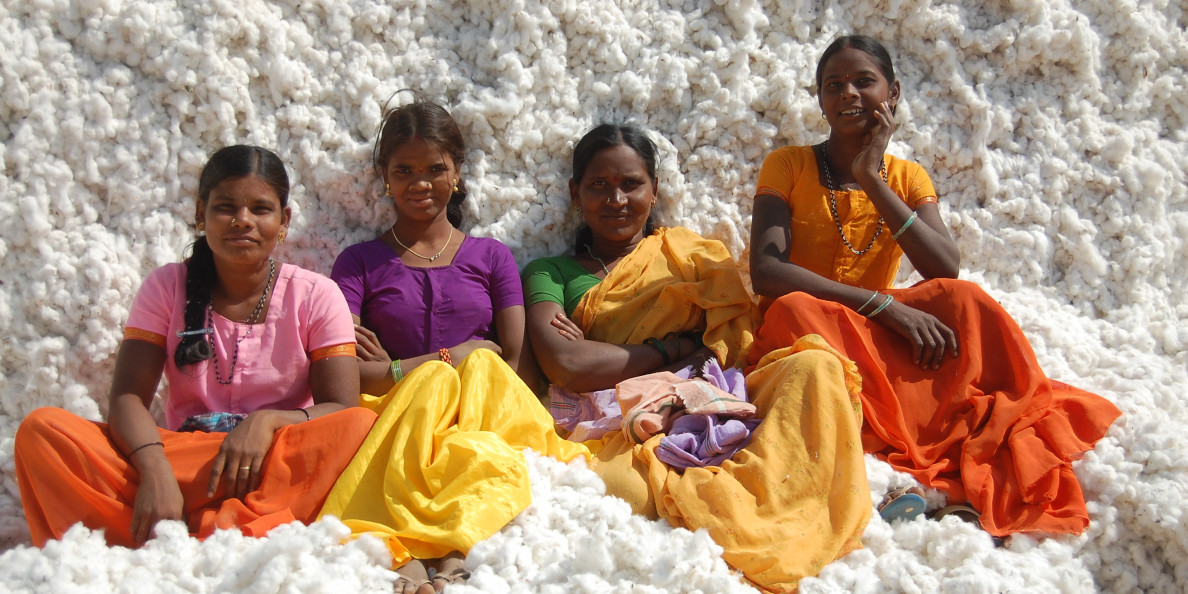1. Indian cotton prices continue to rise after India waives import duty on cotton
Indian cotton arrivals slow down apparently in 2021/22 season. According to AGM, by May 7, 2022, cumulative arrivals have reached 4.1618 million tons in 2021/22 season, down 903.4kt or 17.8% from prior 2-year average. Besides, the buoyant demand for cotton in local market also leads to the continual higher cotton prices. Indian cotton prices have hit Rs. 100,000 per Candy, to be one of the most expensive cotton in the world.
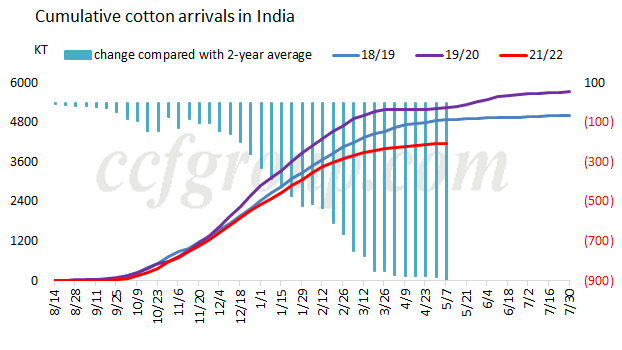
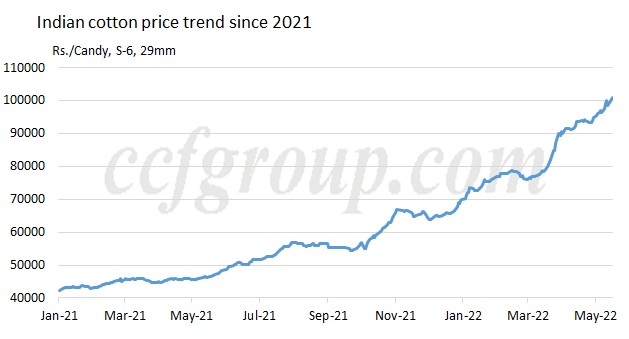
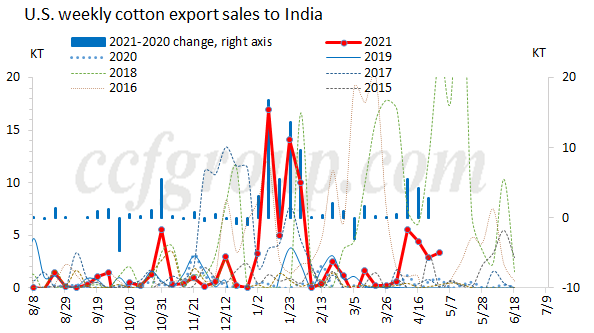
After Indian government announces to waive the import duty on cotton from Apr 14 to Sep 30, U.S. weekly cotton export sales to India increase apparently, and export shipments are also high in three years. However, Indian cotton prices continue to tick up. With the Indian cotton prices breaking through Rs. 100,000 per Candy, downstream spinners complain about the surging cotton prices. They adjust lower the operating rate, and turn to produce from cotton yarn to blended yarn to reduce cotton consumption. The situation has seen from last year in China, and it starts to happen in India.
2. Operating rate of spinning mills continues to reduce
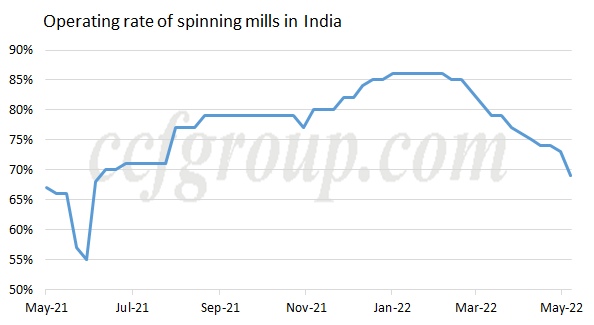
According to CCFGroup, operating rate of spinning mills in India keeps down with surging cotton prices. Operating rate has reduced from 80% in mid-Feb to 60-70% currently. The monthly cotton consumption decreases quickly. It is reported that operating rate of spinning mills in Tamil Nadu has reduced to 30-40%, and the state has 40% of Indian yarn capacity.
3. CAI: both consumption and production is forecast lower, and ending stocks are forecast up
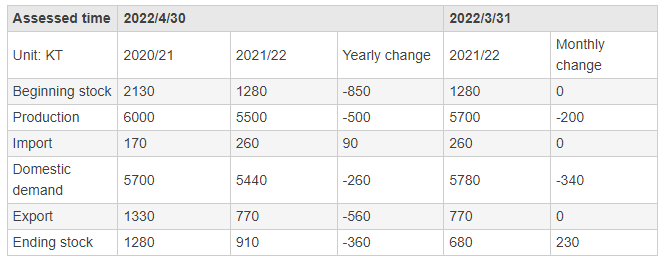
According to the May supply and demand report of Cotton Association of India, compared with the Apr report, 2021/22 Indian cotton production is adjusted lower by 200kt, and consumption is lowered by 340kt. Ending stocks are forecast up by 230kt. In USDA’s May supply and demand report, it forecasts a lower production and export for India. Based on above information, the cotton supply in India is tight currently, and cotton production is forecast to reduce much. In short, the Indian cotton prices may fluctuate highly, but downstream spinners cannot digest the price increase well, and consumption may tend to be gradually sluggish.
In general, Indian cotton supply is tight currently, and its cotton prices may remain range-bound at high level. But more spinning mills face difficulties to operate at current high cotton prices, and the historical high cotton prices may be hard to last for long time. In long run, the prices are likely to go downward.
Πηγή: ccfgroup.com
